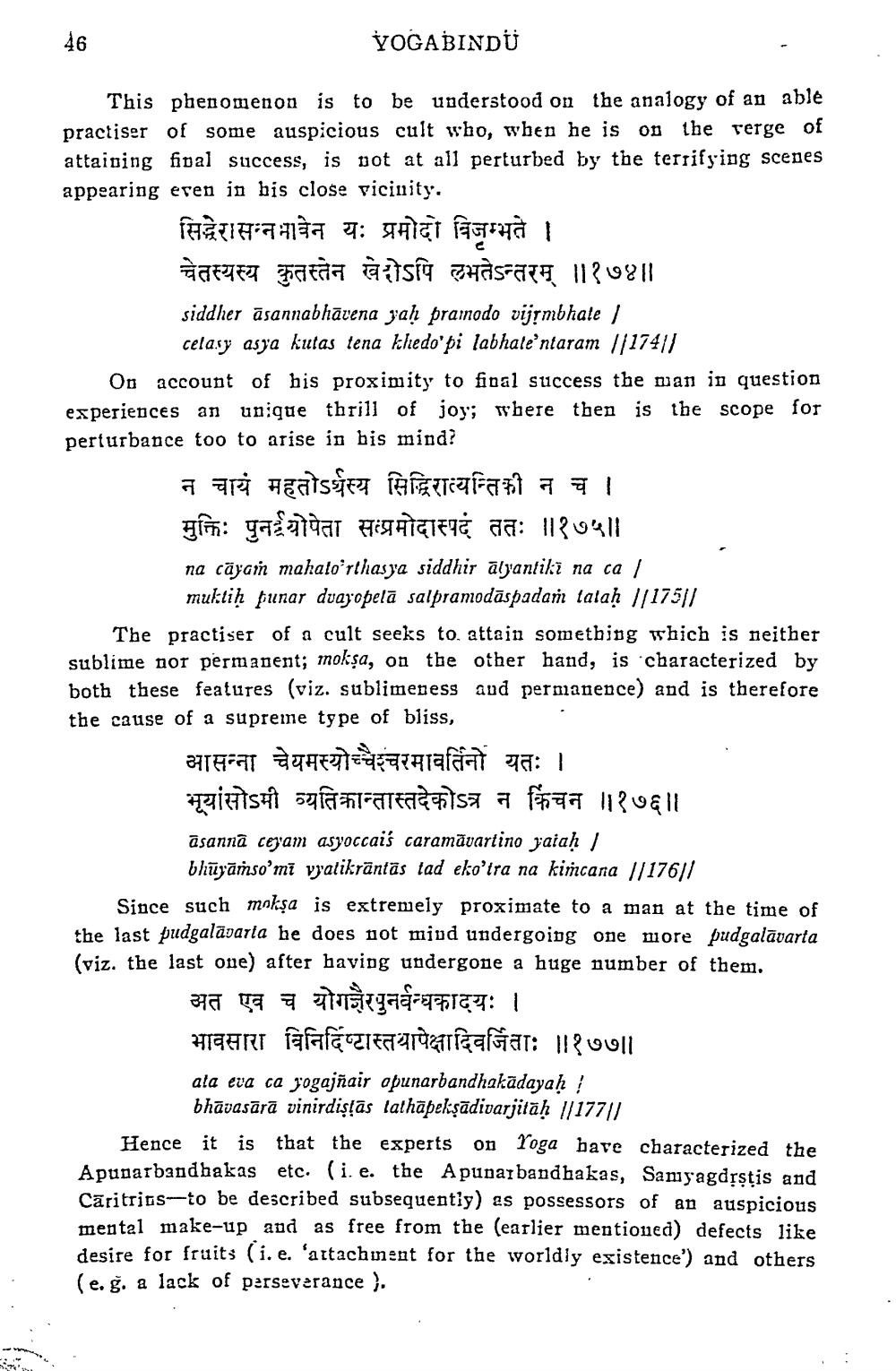________________
VOGABINDU
This phenomenon is to be understood on the analogy of an able practiser of some auspicious cult who, when he is on the verge of attaining fival success, is not at all perturbed by the terrifying scenes appearing eren in bis close vicinity.
सिद्धेरासन्नभावेन यः प्रमोदो विजम्भते ।
चेतस्यस्य कुतस्तेन खेदोऽपि लभतेऽन्तरम् ॥१७४॥ siddher āsannabhāvena yah pramodo vijțmbhale /
celasy asya kutas tena khedo' pi labhale'ntaram ||17411 On account of his proximity to final success the man in question experiences an unique thrill of joy; where then is the scope for perturbance too to arise in his mind?
न चायं महतोऽर्थस्य सिद्धिरात्यन्तिकी न च । मुक्तिः पुनई योपेता सत्प्रमोदास्पदं ततः ॥१७५।। na cāyam mahaloʻrthasya siddhir ālyantiki na ca !
mukliḥ punar duayopelā salpramodāspadam tataḥ 1/17511 The practiser of a cult seeks to attain something which is neither sublime nor permanent; mokşa, on the other hand, is characterized by both these features (viz. sublimeness and permanence) and is therefore the cause of a supreme type of bliss,
आसन्ना चेयमस्योच्चैश्चरमावर्तिनो यतः । भूयांसोऽमी व्यतिक्रान्तास्तदेकोऽत्र न किंचन ॥१७६।। āsannā cejam asyoccais caramāvartino jaiaḥ /
bhūyāṁso'mī vatikrāntās tad eko’tra na kimcana ||17611 Since such mokşa is extremely proximate to a man at the time of the last pudgalāvarta he does not miod undergoing one more pudgalāvarta (viz. the last one) after having undergone a huge number of them.
अत एव च योगज्ञैरपुनर्वन्धकादयः । भावसारा विनिर्दिष्टास्तयापेक्षादिवर्जिताः ॥१७७॥ ala eva ca jogajñair apunarbandhakādayaḥ !
bhāvasārā vinirdişlās lathapekşādivarjitäh //17711 Hence it is that the experts on Yoga bave characterized the Apunarbandhakas etc. (i.e. the Apunarbandhakas, Samyagdrstis and Caritrios--to be described subsequently) as possessors of an auspicious mental make-up and as free from the earlier mentioned) defects like desire for fruits (i. e. 'attachment for the worldly existence') and others (e. g. a lack of perseverance ).




